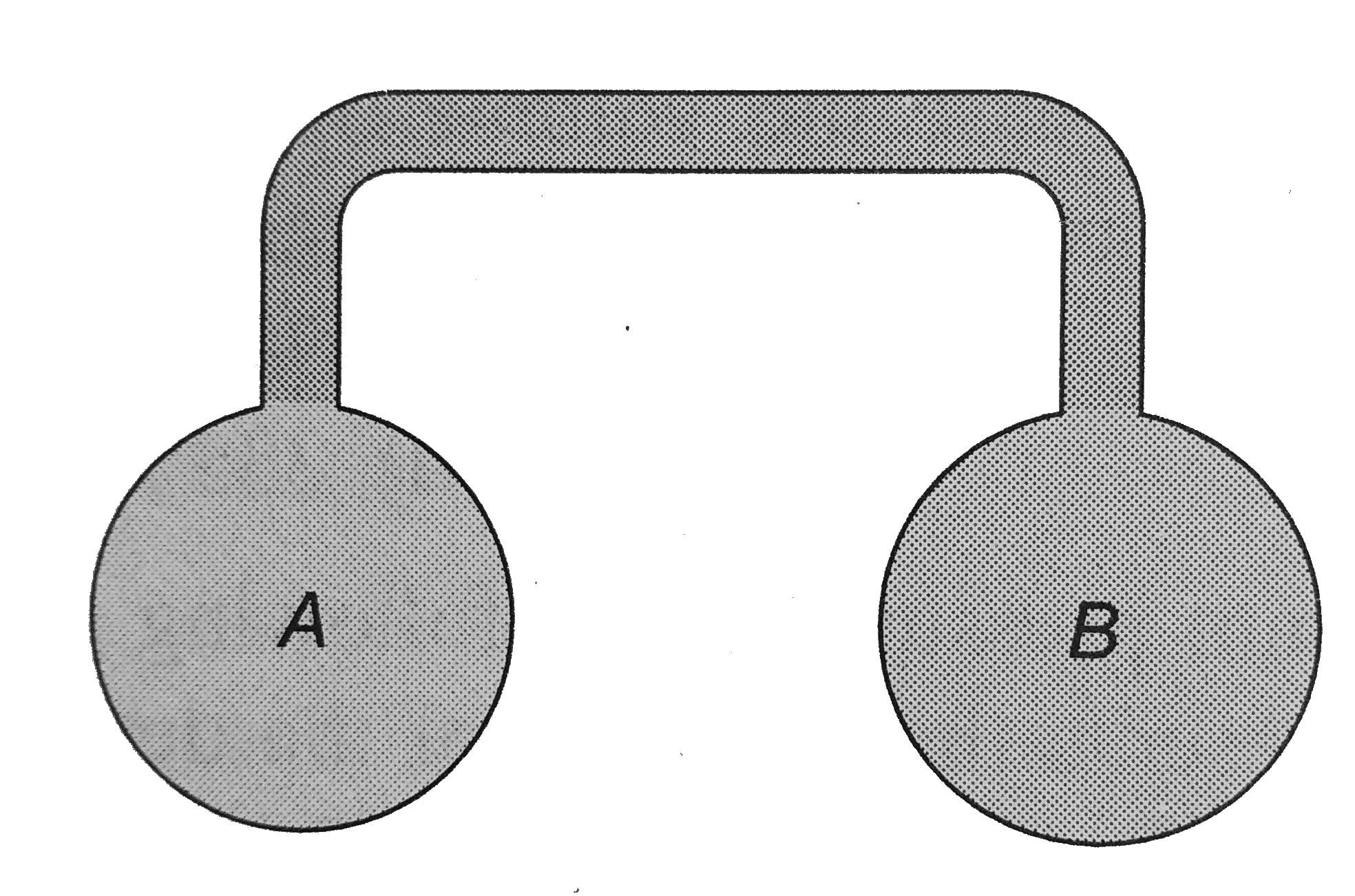Two cylinders A and B of equal capacity are connected to each other via a stop cock. Cylinder A contains an ideal gas at standard temperature and pressure. Cylinder B is completely evacuated. The entire system is thermally insulated. The stop cock is suddenly opened. The process is:
isothermal
adiabatic
isochoric
isobaric
To solve the question, we need to analyze the situation described:
1. Understanding the Setup: We have two cylinders, A and B, which are of equal capacity. Cylinder A contains an ideal gas at standard temperature and pressure (STP), while Cylinder B is completely evacuated. The two cylinders are connected by a stop cock, which is initially closed.
2. Opening the Stop Cock: When the stop cock is suddenly opened, the gas in Cylinder A will expand into Cylinder B. Since Cylinder B is evacuated, the gas will flow from A to B until the pressure equalizes.
3. Thermal Insulation: The problem states that the entire system is thermally insulated. This means that no heat can enter or leave the system during the process.
4. Type of Process:
- Isothermal Process: This occurs at constant temperature. However, since the gas expands into a vacuum and the system is insulated, the temperature will not remain constant.
- Adiabatic Process: This occurs when there is no heat exchange with the surroundings. Since the system is thermally insulated, this is the most applicable process.
- Isochoric Process: This occurs at constant volume. Since the gas is expanding into a vacuum, the volume is changing, so this is not applicable.
- Isobaric Process: This occurs at constant pressure. The pressure will change as the gas expands, so this is also not applicable.
5. Conclusion: Given that the process involves the sudden expansion of gas into a vacuum with no heat exchange, it qualifies as an adiabatic process.
Thus, the correct answer is that the process is an adiabatic process (Option 2).
---
- Isothermal Process: This occurs at constant temperature. However, since the gas expands into a vacuum and the system is insulated, the temperature will not remain constant.
- Adiabatic Process: This occurs when there is no heat exchange with the surroundings. Since the system is thermally insulated, this is the most applicable process.
- Isochoric Process: This occurs at constant volume. Since the gas is expanding into a vacuum, the volume is changing, so this is not applicable.
- Isobaric Process: This occurs at constant pressure. The pressure will change as the gas expands, so this is also not applicable.
Similar Questions
If →a and →b are two unit vectors and θ is the angle between them, then the unit vector along the angular bisector of →a and →b will be given by
View SolutionTwo flasks A and B of equal capacity of volume contain SO3 and CO gas respectively under similar conditions of temperature and pressure. Then, which of the following statement is true?
View Solution
Knowledge Check
Two identical containers A and B with frictionless pistons contain the same ideal gas at the same temperature and the same velocity V. The mass of the gas in A is mA, and that in B is mB. The gas in each cylinder is now allowed to expand isothermally to the same final volume 2V. The changes in the pressure in A and B are found to be ΔPand1.5ΔP respectively. Then
A1. 4mA=9mBB2. 2mA=3mBC3. 3mA=2mBD4. 9mA=4mB
A container with insulating walls is divided into two equal parts by a partition fitted with a valve. One part is filled with an ideal gas at a pressure P and temperature T, whereas the other part is completely evacuated . If the valve is suddenly opened, the pressure and temperature of the gas will be
View SolutionA container with insulating walls is divided into two equal parts by a partition fitted with a valve. One part is filled with an ideal gas at a pressure P and temperature T, whereas the other part is completely evacuated . If the valve is suddenly opened, the pressure and temperature of the gas will be
View SolutionA cylinder of fixed capacity 44.8 litre contains helium gas at standard temperature and pressure. What is the amount of heat needed to raise the temperature of the gas in the cylinder by 15.0∘C?[R=8.31Jmol−1K(−1)]
View SolutionA sound wave passing volume 1m3 is divided into two equal compartments by a partition. One of these compartments contains an ideal gas at 300K. The other compartment is vacuum. The whole system is thermally isolated from its surroundings. The partition is removed and the gas expands to occupy the whole volume of the container. Its temperature now would be
View SolutionA piston can freely move inside a horizontal cylinder closed from both ends. Initially, the piston separates the inside space of the cylinder into two equal parts each of volume V0 in which an ideal gas is contained under the same pressure p0 and at the same temperature. What work has to be performed in order to increase isothermally the volume of one part of gas η times compared to that of the other by slowly moving the piston ?
View SolutionAn insulated container is divided into two equal portions. One portion contains as ideal gas at pressure P and tenperature T. The othe portion is a perfect vaccume. If a hole is opened between the two portions, claculate
a. the change in internal energy.
b. the change in temperature.
View SolutionTwo spherical vessel of equal volume are connected by a n arrow tube. The apparatus contains an ideal gas at one atmosphere and 300K. Now if one vessel is immersed in a bath of constant temperature 600K and the other in a bath of constant temperature 300K. then the common pressure will be

View Solution
